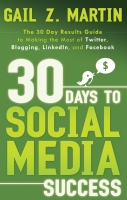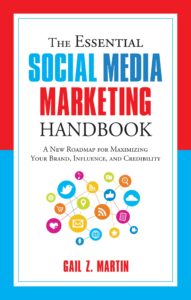 by Gail Z. Martin excerpted from 30 Days to Social Media Success
by Gail Z. Martin excerpted from 30 Days to Social Media Success
Don’t leave it up to the event organizers to publicize your upcoming appearances. When you book an engagement, write a press release and upload it to the many free online press release distribution sites. Every release increases the number of places your name shows up in search engine results, and those links can help drive traffic to your site. Then Tweet the links to your releases, post them to the Social Bookmarking sites, and add them to your other web sites and social media pages.
You may also want to create a blog just for your news releases, and a separate blog for your upcoming appearances and have both feed into your web site and other social media pages. It makes it easy and inexpensive for you to add to your releases and events without requiring a designer’s help, it keeps your schedule and news prominent and fresh on your sites, and it makes your effort and links to triple duty.
When you’re working the local media in the city where you’ll be speaking, don’t overlook locally-based Internet radio shows, event posting sites tied to the newspaper or ZIP code that allow you to upload the event announcement, and the load-your-own-news option now available on my online newspapers and TV/radio sites. You could cut your own inexpensive Video News Release (VNR) with a friend playing the anchor and a digital video recorder and make it look like a TV interview, then upload it. (Note: The intent is to create an informative item in a news-like format, not to mislead the viewer to believe that they are watching a clip from an actual news show. Always attribute your company as the producer in the clip credits.)
Use your social media to find new ideas for events and bookings. Set Google Alerts not only for your own name, book titles and company name, but use it to see what your competitors are doing. Add the names of the top five speakers in your topic/industry and see where they’re speaking. That may give you new ideas for the local or regional chapters of the same organizations, or for a presentation that is similar but not repetitive to pitch to that group next year. If you subscribe to sites like eSpeaker.com or other online speakers bureaus, be sure to use the forums and member profiles to make your own connection to other speakers. Introduce yourself and forge alliances where you both share research, contacts and tips about events. You can also use Facebook and LinkedIn to do the same with the speakers you meet at the conferences and events you attend. Remember? Social media offers a great chance to wow event planners before they ever pick up the phone.
Now through December 31, 2015 the Kindle edition of 30 Days to Social Media Success is specially priced at just $5.99!






